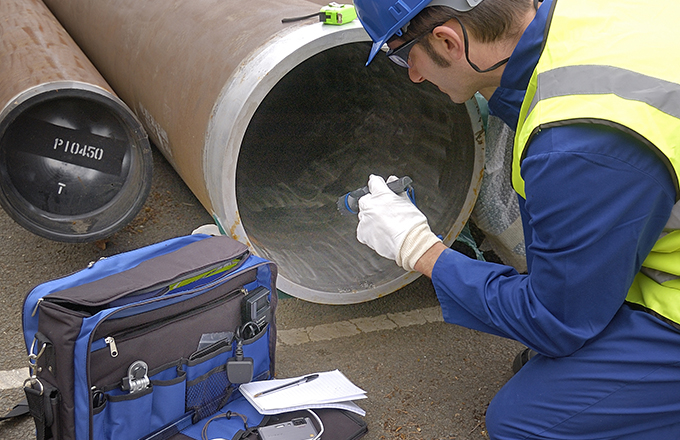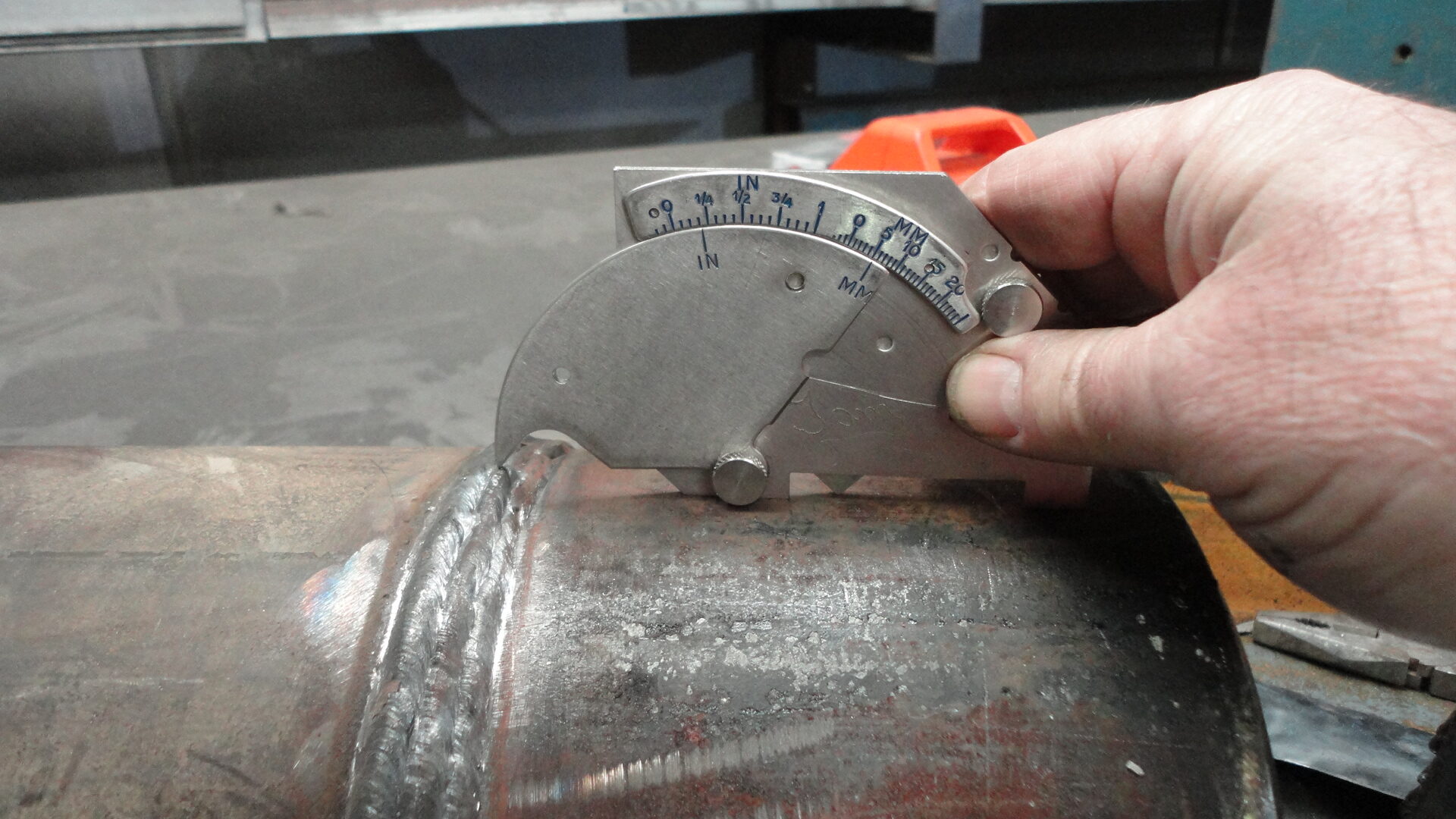A Detailed List for Effective Welding Assessment Practices
In the world of welding, the honesty of frameworks is critical, necessitating a rigorous strategy to assessment methods. An extensive checklist works as a vital device in making sure adherence to market standards, including vital pre-welding, in-process, and post-welding evaluations. By systematically attending to material confirmation, weld quality, and thorough paperwork, organizations can dramatically boost safety and security and performance. What certain components should be focused on in each phase to attain ideal results? Exploring these essential parts can yield understandings that greatly impact welding procedures.
Recognizing Welding Criteria
Welding criteria play an important function in ensuring the top quality and security of bonded components and frameworks. These standards establish the criteria for materials, procedures, testing, and inspection, thus offering a framework for constant high quality assurance in welding procedures. Numerous companies, including the American Welding Society (AWS), the International Organization for Standardization (ISO), and the American Culture of Mechanical Engineers (ASME), have actually established detailed requirements that govern different aspects of welding.
Recognizing welding criteria is necessary for professionals in the area, as adherence to these guidelines reduces the danger of defects and failures in bonded joints. These standards cover particular demands for weld high quality, including acceptable resistances, the sort of welding strategies to be used, and the qualifications needed for welders and examiners.

Pre-Welding Evaluation Actions
Before any welding process begins, a detailed pre-welding examination is important to determine potential issues that may compromise the high quality of the weld. This preliminary action functions as an important foundation for guaranteeing conformity with applicable welding codes and requirements.
The primary step in the pre-welding evaluation is to verify the materials being utilized. This includes checking for the proper type and grade of steels as defined in the project documentation. Next, it is vital to evaluate the fit-up of the components to guarantee appropriate alignment and joint arrangement. Misalignment can bring about insufficient penetration and structural weak points.
Additionally, assessing the cleanliness of the surface areas is vital; contaminants such as oil, rust, or paint can negatively impact the high quality of the weld. Following this, a comprehensive assessment of the welding devices need to be performed, guaranteeing that it is calibrated and in great working condition.
Lastly, examining the certifications of the welding employees is necessary. Welders should have the necessary accreditations and experience to do the certain welds needed for the task. By sticking to these pre-welding assessment actions, the likelihood of problems and failures in the final weld can be substantially minimized.

In-Process Assessment Techniques
In-process inspection methods play a vital duty in making sure the integrity and top quality of welds as they are being performed. These methods allow examiners to determine issues or deviations from specifications in actual time, therefore guaranteeing and preventing pricey repair work adherence to style demands.
One key strategy involves visual examination, where assessors analyze the weld grain for uniformity, penetration, and proper profile. This can be complemented by the use of evaluates to measure weld measurements, guaranteeing compliance with established resistances. In addition, the application of non-destructive testing (NDT) methods, such as ultrasonic testing or magnetic particle screening, during the welding process can expose subsurface defects that might not show up on the surface.
An additional vital aspect is keeping an eye on welding criteria, consisting of voltage, amperage, and travel rate. Uniformity in these criteria is critical for achieving optimum weld quality. Documenting these specifications during the welding operation provides a traceable document for future recommendation.
Educating employees in correct evaluation strategies and using suitable devices improves the efficiency of in-process assessments. By integrating these techniques, companies can accomplish greater quality welds, decrease rework, and ultimately guarantee the security and integrity of bonded frameworks.
Post-Welding Top Quality Checks
Adhering to the completion of welding operations, post-welding quality checks are essential to this validate that the welds meet all defined standards and needs. These checks are crucial for making certain the stability and toughness of the welded joints. The examination procedure typically begins with an aesthetic evaluation, evaluating for surface defects such as splits, porosity, or insufficient combination.
Consequently, non-destructive testing (NDT) techniques, such as ultrasonic testing, radiographic testing, or magnetic bit screening, might be used to discover interior problems that are not noticeable to the nude eye. Each method has its distinct benefits and is selected based on the weld's location, material type, and the nature of the application.
Assessing the mechanical residential properties of the weld, consisting of tensile toughness and ductility, can provide additional assurance of performance under operational problems. In general, extensive post-welding examinations are crucial for preserving adherence, safety and security, and performance to regulative and sector criteria.
Documents and Reporting
Exactly how can reliable documents and reporting improve the welding inspection procedure? Precise documentation and thorough reporting are important components that guarantee the stability and high quality of welding procedures. Welding Inspection Milwaukee. They function as a formal document of examination findings, promoting liability and traceability in compliance with industry criteria

A well-structured reporting system allows examiners to clearly communicate any kind of non-conformances, Welding Inspection Milwaukee areas, or discrepancies calling for enhancement. This transparency cultivates an environment of continual enhancement, as stakeholders can easily assess previous efficiency and execute corrective actions.
Furthermore, effective documents includes detailed records such as welding procedure specifications (WPS), welder credentials, and evaluation lists. These elements offer a framework for reviewing click here for more weld top quality and adherence to developed guidelines. In case of disagreements or top quality problems, thorough documentation offers as a reputable referral, reducing ambiguity and securing all events entailed.
Lastly, preserving organized records assists in training and licensing employees, making sure that market ideal techniques are supported. Eventually, precise paperwork and reporting not just improve the welding examination procedure however likewise add to the total security and reliability of welded structures.

Verdict
Finally, a thorough list for reliable welding inspection techniques is crucial for making sure high quality and security in welded frameworks. Adherence to developed welding criteria, precise pre-welding evaluations, strenuous in-process assessments, and complete post-welding quality checks jointly add to the honesty of welded joints. Additionally, thorough documents and coverage of examination findings improve liability and facilitate constant enhancement. Implementing these practices will substantially help in compliance with market requirements and ultimately cultivate a society of high quality in welding operations.
Welding requirements play a crucial role in ensuring the high quality and safety and security of welded structures and parts. Different companies, consisting of the American Welding Society (AWS), the International Organization for Standardization (ISO), and the American Society of Mechanical Engineers (ASME), have actually created thorough criteria that control different aspects of welding.
Adhering to the completion of welding procedures, post-welding quality checks are crucial to validate that the welds satisfy all specified requirements and requirements - Welding Inspection Milwaukee.In final thought, a comprehensive checklist for efficient welding evaluation methods is vital for making certain top quality and safety in bonded structures. Adherence to established welding requirements, careful pre-welding evaluations, rigorous in-process evaluations, and complete post-welding top quality checks collectively add to the integrity of bonded joints